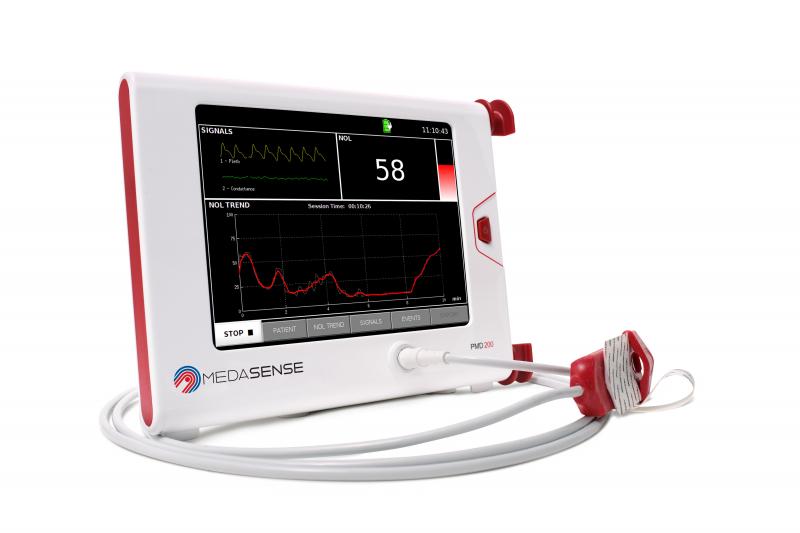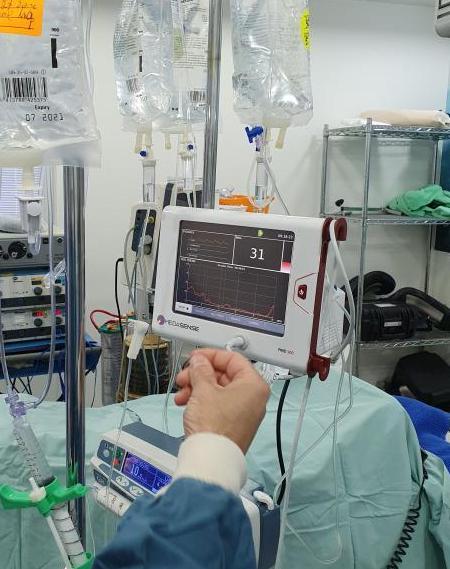
?Who Isn’t Afraid of Anaesthesia
By Prof. Eyal Winkler
Fear of anaesthesia is common among candidates for any type of surgery – cosmetic surgery included. I take the time to tell my patients about the substantial advancements in anaesthesia that I’ve seen over the past 20 years, since beginning my specialization in the field of plastic surgery. This progress has introduced more effective anaesthetic drugs, a better understanding of how to reduce risk and increase patient safety, and a more personalized approach to anaesthesia according to a patient’s age, health and preexisting conditions.
Two weeks ago, I was presented with a device that I was assured would revolutionize how we monitor patients under general anaesthesia during surgery. The device (the PMD-200, developed in Israel by Medasense) monitors and quantifies the physiological pain-response that a patient experiences during surgery, when under general anaesthesia and unable to communicate. The device is intended to help the attending physician if and when it may be necessary to supplement or reduce the amount of pain medication administered during a procedure. Overuse and underuse of these substances can have adverse consequences, both during and after surgery.

I’m generally quite skeptical and not overly tolerant of marketing propositions. But in this case both I and the anaesthesiologist working beside me were pleasantly surprised.
Why is it important to assess pain felt by a patient who is under general anaesthesia – when they are supposedly unaware and will not remember any experience of pain from the surgery? The reason for this is quite simple and logical.
Pain during and after surgery is a normal physiological phenomenon, caused by tissue damage and the subsequent development of an inflammatory process. Its intensity peaks at the time of injury and usually decreases with the recovery process. Local pain (even when we are not aware of it and do not consciously feel it) activates blood circulation and anti-inflammatory mechanisms that can cause local edema, swelling and a delay in the healing process – a process that is faster when the location of injury is numbed. For this reason, surgeons performing procedures with general anaesthesia (such as nose surgery, liposuction and others) also inject local anaesthetics to help suppress the local mechanisms that may affect the healing process and to enable faster recovery.
Pain treatment begins in the operating room. When effective, it helps shorten recovery time and may even shorten hospital stay.
I would like to make it unequivocally clear that I have no commercial interest or financial gain in reviewing this device; my interest is solely medical and professional.
Medasense made the PMD-200 available to me for testing in four complex cosmetic facial surgeries. The device is non-invasive: only a finger probe with tiny sensors fitted on the patient’s finger. These four cases were the first cosmetic procedures to be conducted in Israel with the device. I found the novel application not only insightful, but also important.

At particular stages during surgery – such as at the end of a facelift, when administering a deep-tissue autologous fat injection, toward the bone layer of the upper jaw – we observed a sudden spike in the NOL index values (which is the measure presented by the device, quantifying the patient’s physiological response to noxious stimuli). At those instances, I examined the other physiological parameters that are commonly used during surgery (such as pulse rate or blood pressure) to understand if a patient is in pain. Those parameters, however, showed no indication of response to pain – and as such, monitoring patients with this new device allowed me to identify the patients’ response and achieve vastly improved accuracy in treating their needs.
When I noticed a spike in the NOL, I immediately supplemented the local anesthesia. I was able to do so in every surgery, enabling suppression of the pain mechanism and its potential consequences in each of the patients.
In my opinion and to the best of my understanding, this device can be used not only in cosmetic surgery but also in major and more invasive procedures; but that is not my specialty. As a plastic surgeon, I am hopeful that the hospitals where I practice will introduce this device in the near future. After all, every individual has a different pain threshold and responds differently to pain medication. If we cannot monitor it effectively, how will we know?